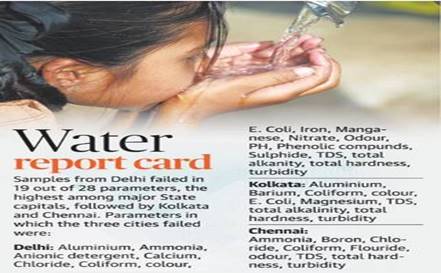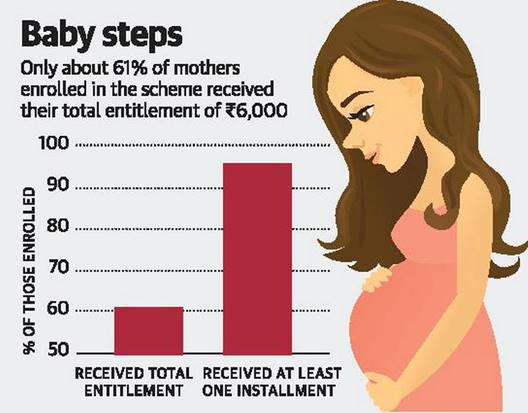



Bhutan to levy charges on tourists from India
In a major shift in policy, Bhutan plans to levy charges on tourists from regional countries, including India, Bangladesh and the Maldives, who at present are exempted from any charges.
- Bhutan’s “High Value, Low Impact” policy will monitor tourist arrivals depending on their capacity to cater to them.
- Number of tourists have increased on rapid rate. It grew 10 times in a decade.
- Out of the total 2, 74,000 tourists 2, 00,000 tourists belonged from the region, of which about 1, 80,000 were from India.
- International tourists, who pay $250 (Approx. INR. 18,000) as a minimum charge per day per person, which includes a $65 a day “Sustainable Development Fee”, as well as a $40 visa charge, tourists from India, Bangladesh and the Maldives had so far paid no fees.
- It may charge Sustainable development fee and Permit Processing fee.
- Objective is to cut the tourists numbers and let them increase in sustainable manner.
- It is an advanced earth imaging and mapping satellite.
- It will be flown on November 25 on the PSLV-C47 vehicle.
- Cartosat-3, with an ISRO-best resolution of 25 cm, will be the first of a series of high resolution, third generation satellites planned for observing the Earth.
- The satellite will be able to pick up objects of that size (25 cm) from its orbital perch about 509 km away.
The Reserve Bank of India (RBI) advised the government that the electoral bonds it had proposed in 2017 would not solve the problem of unaccounted-for money since the donor’s identity will be never be known.
- The problem with these instruments is that, while the information of the person who is buying bond is known (to the bank); the donors’ identity is not known.
- A person, who buys the bond, can give to it to another person who actually donates it to a political party, and there is no record of the person who takes it from the person who buys it.
- Therefore, any person who wants to hide his identity can make some other person buy it and give it to him.
- It has almost become like the currency.


- Giving all States, irrespective of their population and size, an equal number of seats in the Rajya Sabha.
- The northeastern States did not have enough representation.
- Population should not be the basis for deciding representation.
With interest rate on fixed deposits fallen significantly over the past many months, bank deposits may be finding their way to the equity markets.
- As we are transcending to a lower interest rate regime, we are clearly witnessing relatively lower pace of increase in time deposits compared to participation of individuals (retail and HNI) in the NSE cash market.
- Indian banks are pushing the quarterly results to earlier dates, which could be seen as improvement in the asset quality cycle.
- SCBs’ gross non-performing asset (GNPA) ratio may decline from 9.3% in March 2019 to 9.0% in March 2020.
- The report estimates, with the available results of public sector banks for Q2 FY20, the GNPA ratio is around 11.7%, lower than the overall PSB March 2019 ratio of 12.6%.
The report of the Ministry of Consumer Affairs, Food and Public Distribution has red-flagged tap water quality in major Indian cities.
- Delhi has abysmal water quality.
- Chennai and Kolkata rank very low.
- Mumbai is the only city with acceptable results.
- Bureau of Indian Standards carried out the tests.
- City water systems are normatively required to comply with the national standard for drinking water, IS 10500:201.

- It is mandatory for bottled water manufacturers to meet quality standards.
- The BIS standard is voluntary for the public agencies, which supply and distribute piped water.
- The Indian standard has a plethora of quality requirements, including absence of viruses, parasites and microscopic organisms, and control over levels of toxic substances.
- Expanding footprint of packaged drinking water.
- High dependence on groundwater in fast-growing urban clusters where State provision of piped water systems does not exist.
- The lack of accountability of the official agencies.
- Absence of robust data in the public domain on quality testing.
- Naming and shaming through a system of ranking.
- Make BIS standards a legal binding on the Public agencies.
- Customers can be empowered through rights based approach.
- State governments need to take an integrated view of housing, water supply, sanitation and waste management.
- A scientific approach to water management is vital as 21 cities could run out of groundwater as per Niti Ayog Report.
- Regular testing can be entrusted to a separate agency with the task in each State.
- If data on water were made public on the same lines as air quality, it would ratchet up pressure on governments to act.
Reference: https://www.thehindu.com/todays-paper/tp-opinion/quality-on-tap/article30002531.ece

As per RTI information, a vital programme to support lactating mothers and pregnant women by compensating them for loss of wages during their pregnancy has been able to reach less than a third of the eligible beneficiaries.
- Almost 61% of beneficiaries registered under the Pradhan Mantri Matru Vandana Yojana (PMMVY) between April 2018 and July 2019 (38.3 lakh out of the total 62.8 lakh enrolled) received the full amount of Rs. 6,000 promised.
- It is similar to findings of survey conducted by Jean Dreeze.
- The PMMVY is targeted only at women delivering their first child.
- A cash amount of Rs. 6,000 is transferred to the bank account of the beneficiary in three instalments upon meeting certain conditions.
- These conditions include early registration of pregnancy, having at least one antenatal check-up and registration of childbirth.
- The scheme brings under its ambit 23% of all births and pays full benefits to a mere 14% of all births.
- Only 50% of pregnant women and 57% of nursing women surveyed were eligible for the scheme.
- Lack of Awareness: only 66% of pregnant women and 69% of nursing women knew about the scheme.
- An application form of about 23 pages. A slew of documents such as mother-child protection card, Aadhaar card, husband’s Aadhaar card and bank passbook aside from linking their bank accounts with Aadhaar.
- The requirement to produce the husband’s Aadhaar card results in excluding single mothers.
- Women must also have the address of their marital home on their Aadhaar card, which creates hurdles.

© 2025 iasgyan. All right reserved